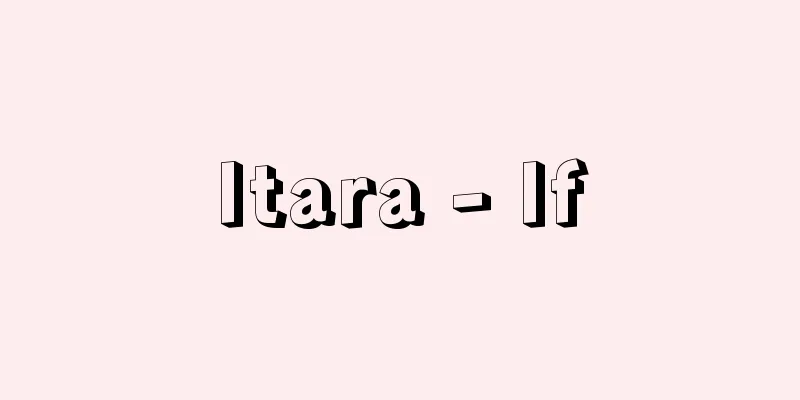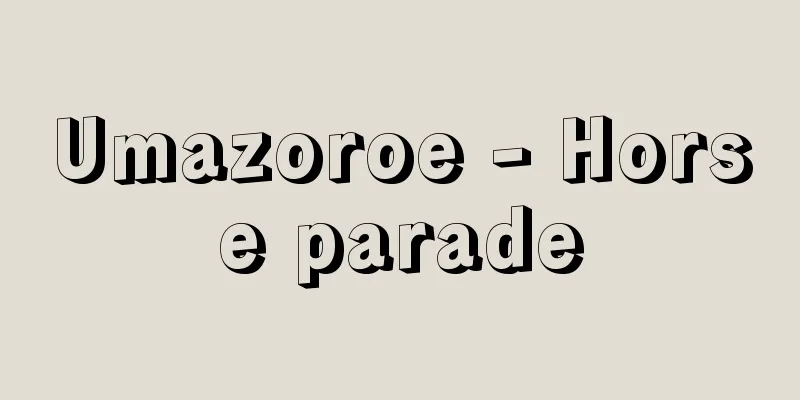Toru Takemitsu

|
Composer. Born in Tokyo. Apart from a brief period in 1948 (Showa 23) when he studied under Yasuji Kiyose (1900-1981), he was self-taught in composition. Since releasing his piano piece "Two Lentos" (1950), he has produced works based on his own aesthetic, influenced by Debussy, Webern, and Messiaen, and further incorporating Western avant-garde music techniques such as musique concrète and uncertainty. In 1951, he formed the art group "Experimental Workshop" with Joji Yuasa and others. Takemitsu's music for the films "Seppuku" (1962) and "Kaidan" (1964) was pioneering work in modern Japanese music, using Japanese instruments such as the biwa (loop) and shakuhachi (bamboo flute), while also being avant-garde in its use of electronic modulation of the sounds of Japanese instruments. Works such as Son Calligraphy (1959-1961), Textures (1964), and Doria on the Horizon (1966) for eight strings were written using the tone cluster technique with Western instruments. These works led to November Steps (1967, commissioned by the New York Philharmonic) for biwa, shakuhachi, and orchestra. November Steps, known as Takemitsu's masterpiece, is a crystallization of his attempt at using Japanese instruments in film music and avant-garde orchestration. From the 1970s onwards, Takemitsu's avant-garde style was toned down, and tonal melodies and harmonies began to be seen. For example, in "Birds Fall in the Hoshigata Niwa Niwa" (1977), "Toi Yobe no Kanata e!" (1980), and "A String Around Autumn" (1989), the themes and harmonies became tonal, and traditional Japanese instruments were removed, with violins, violas and other instruments from the orchestra used as solo instruments. However, the orchestration reflects the individual characteristics of the solo instruments, which is common to concertos that use traditional Japanese instruments as solo instruments. Takemitsu's works are characterized by the expression of Japanese sound sensibility through avant-garde compositional techniques. He also wrote many books discussing thoughts on sound, such as "Sound, Silence and Measuring It" (1971), "Dream Quotation" (1984), and "Ongaku yobamasu Mono" (1985). He was also involved in a wide range of producing activities, including planning and organizing the contemporary music festival "Music of Today," which began in 1973. In 1990, he received the Prix Maurice Ravel International and the Mainichi Art Award. [Yoko Narazaki] "Sound, so close to silence" (1971, Shinchosha) ▽ "From the margins of music" (1980, Shinchosha) ▽ "Dream quotations" (1984, Iwanami Shoten) ▽ "What awakens music" (1985, Shinchosha) ▽ "Takemitsu Toru conversations - to escape all conventions" (1987, Ongaku No Tomosha) ▽ "Beyond the distant call" (1992, Shinchosha) ▽ "Sound, words, humans" (1992, Iwanami Shoten) ▽ "Takemitsu Toru conversations - wings of song, wand of words" (1993, TBS Britannica) ▽ "The gardener of time" (1996, Shinchosha) ▽ "Takemitsu Toru conversations - the periphery of creativity" (1997, Geijutsu Gendaisha) ▽ "Silent Garden - Report from a Hospital Stay, Caroline's Festival" (1999, Shinchosha) ▽ "Can Our Ears Hear?" (2000, Japan Library Center) ▽ "The Collected Works of Toru Takemitsu, 5 volumes (2000, Shinchosha)" ▽ "Music Notebook 14: Toru Takemitsu" by Jun Ishikawa, J. Cage and others (1981, Seidosha) ▽ "The Compositional Styles of Toru Takemitsu and Akira Miyoshi - On Atonality and Tonal Group Technique" by Yoko Narazaki (1994, Ongaku No Tomo Sha) ▽ "Sounds of the Periphery - Stravinsky and Toru Takemitsu" by Ikko Toyama (1996, Ongaku No Tomo Sha) ▽ "The World of Toru Takemitsu" edited by Shinji Saito and Maki Takemitsu (1997, Shueisha) ▽ "Takemitsu Toru - Into the Sea of Sound" by Funayama Takashi (1998, Ongaku No Tomosha)" ▽ "Takemitsu Toru the Composer and Mayuzumi Toshiro the Person" by Iwaki Hiroyuki (1999, Sakuyo Gakuen Publishing Division)" ▽ "Takemitsu Toru - Sound, Words, Images" by Konuma Junichi (1999, Seidosha) ▽ "Takemitsu Toru - Where the River of Sound Leads" edited by Nagaki Seiji and Higuchi Ryuichi (2000, Heibonsha) ▽ "Masters of Japanese Film Music 1: Hayasaka Fumio, Sato Masaru, Takemitsu Toru, Koseki Yuji" by Kobayashi Jun (2001, Wise Publishing)" ▽ "Beyond the Call" by Tsujii Takashi (2001, Shisousha) ▽ "Opening a Hole" by Tanikawa Shuntaro (2002, Soshisha)" ▽ "Music" by Takemitsu Toru and Ozawa Seiji (Shincho Bunko)" ▽ "Creating Opera" by Takemitsu Toru and Oe Kenzaburo (Iwanami Shinsho)" ▽ "The Pleasures of Cinema" by Hasumi Shigehiko and Takemitsu Toru (Kawade Bunko)" ▽ "Monologues in front of the camera -- Haniya Yukio, Inokuma Genichiro, Takemitsu Toru" written and photographed by Mario Ambrosius (Shueisha Shinsho) [References] | | |Source: Shogakukan Encyclopedia Nipponica About Encyclopedia Nipponica Information | Legend |
|
作曲家。東京生まれ。1948年(昭和23)に一時、清瀬保二(やすじ)(1900―1981)に師事した以外は独学で作曲を学ぶ。ピアノのための『二つのレント』(1950)を発表して以来、ドビュッシー、ウェーベルン、メシアンの影響を受けながら、さらにミュージック・コンクレートや不確定性など欧米の前衛音楽の手法を用いて、独自の美学に基づく作品を発表する。1951年湯浅譲二らと芸術グループ「実験工房」を結成。武満が担当した映画『切腹』(1962)、『怪談』(1964)の音楽は、琵琶(びわ)、尺八などの邦楽器を用いた現代邦楽の先駆的な作品であると同時に、邦楽器の音を電子変調するなどした前衛的な作品でもある。8弦楽器のための『ソン・カリグラフィー』(1959~1961)、『テクスチュアズ』(1964)、『地平線のドーリア』(1966)などは西洋の楽器を使ってトーン・クラスター(音塊・密集音群)の手法で書かれている。これらの作品を経て、琵琶(びわ)、尺八とオーケストラのための『ノヴェンバー・ステップス』(1967。ニューヨーク・フィルハーモニー委嘱作品)が書かれるに至る。武満の代表作として知られる『ノヴェンバー・ステップス』は、映画音楽で試みられた邦楽器の使用と前衛的なオーケストレーションとが一つに結晶した作品といえる。 1970年代以降は、それまでの前衛的な作風は緩和されて、調性感のあるメロディや和声がみられるようになる。たとえば『鳥は星形の庭に降りる』(1977)、『遠い呼び声の彼方(かなた)へ!』(1980)、『ア・ストリング・アラウンド・オータム』(1989)では、テーマも和声も調的になり、邦楽器は退いて、バイオリン、ビオラなどの通常のオーケストラの楽器が独奏楽器として使われるようになる。しかし、独奏楽器の個々の特性を反映させたオーケストレーションという点では、邦楽器を独奏楽器とする協奏曲と共通している。日本的な音感覚が前衛的な作曲技法で表現されている点に、武満作品の特徴がある。『音、沈黙と測りあえるほどに』(1971)、『夢の引用』(1984)、『音楽を呼びさますもの』(1985)など、音についての思考を論じた著書も多数残している。1973年に始まる現代音楽祭「今日の音楽」の企画構成をはじめとするプロデュース活動も広く行った。1990年(平成2)国際モーリス・ラベル賞と毎日芸術賞を受賞。 [楢崎洋子] 『『音、沈黙と測りあえるほどに』(1971・新潮社)』▽『『音楽の余白から』(1980・新潮社)』▽『『夢の引用』(1984・岩波書店)』▽『『音楽を呼びさますもの』(1985・新潮社)』▽『『武満徹対談集――すべての因襲から逃れるために』(1987・音楽之友社)』▽『『遠い呼び声の彼方へ』(1992・新潮社)』▽『『音・ことば・人間』(1992・岩波書店)』▽『『武満徹対談集――歌の翼、言葉の杖』(1993・ティビーエス・ブリタニカ)』▽『『時間(とき)の園丁』(1996・新潮社)』▽『『武満徹対談集――創造の周辺』(1997・芸術現代社)』▽『『サイレント・ガーデン――滞院報告・キャロラインの祭典』(1999・新潮社)』▽『『私たちの耳は聞こえているか』(2000・日本図書センター)』▽『『武満徹著作集』全5巻(2000・新潮社)』▽『石川淳、J・ケージ他著『音楽の手帖14 武満徹』(1981・青土社)』▽『楢崎洋子著『武満徹と三善晃の作曲様式――無調性と音群作法をめぐって』(1994・音楽之友社)』▽『遠山一行著『「辺境の音」――ストラヴィンスキーと武満徹』(1996・音楽之友社)』▽『斎藤慎爾・武満真樹編『武満徹の世界』(1997・集英社)』▽『船山隆著『武満徹――響きの海へ』(1998・音楽之友社)』▽『岩城宏之著『作曲家武満徹と人間黛敏郎』(1999・作陽学園出版部)』▽『小沼純一著『武満徹――音・ことば・イメージ』(1999・青土社)』▽『長木誠司・樋口隆一編『武満徹――音の河のゆくえ』(2000・平凡社)』▽『小林淳著『日本映画音楽の巨匠たち1 早坂文雄・佐藤勝・武満徹・古関裕而』(2001・ワイズ出版)』▽『辻井喬著『呼び声の彼方』(2001・思想社)』▽『谷川俊太郎著『風穴をあける』(2002・草思社)』▽『武満徹・小沢征爾著『音楽』(新潮文庫)』▽『武満徹・大江健三郎著『オペラをつくる』(岩波新書)』▽『蓮実重彦・武満徹著『シネマの快楽』(河出文庫)』▽『マリオ・アンブロシウス文・写真『カメラの前のモノローグ――埴谷雄高・猪熊弦一郎・武満徹』(集英社新書)』 [参照項目] | | |出典 小学館 日本大百科全書(ニッポニカ)日本大百科全書(ニッポニカ)について 情報 | 凡例 |
>>: Takemikazuchi no Kami - Takemikazuchi no Kami
Recommend
Mishima Calendar - Mishima Calendar
〘Noun〙 A calendar written in extremely detailed ka...
Antiochus [I] - Antiochus
King of the Seleucid Empire of Syria (reigned 281-...
Middle lobe syndrome
…The causes are sputum retention in the bronchi, ...
Viewing tax - Kanranzei
...If the admission fee per person is 2,000 yen f...
Agathias - Agathias (English spelling)
Byzantine poet and historian. Born in Myrina in A...
Mycetophilidae
...A general term for insects belonging to the fa...
Anthroposophie (English spelling) German
It refers to the mystical theory and educational ...
Friedmann, A.
...From this perspective, there is no distinction...
Modern Rationalism
…Today, when we hear the word “rationalism,” we t...
Prothoracic tropin
…Abbreviated as BH. Originally it was called brai...
Polygonatum falcatum (English spelling) Polygonatumfalcatum
…[Tetsuichi Yahara]. … *Some of the terminology t...
Intersubjective constructivism
...This, combined with the knowledge of quantum m...
Koji Okubo
...Turkology studies in Japan began as part of Ch...
Karpat medence
…It is bounded to the north and east by the Carpa...
Artificial heart
A heart that partially or completely replaces the...









